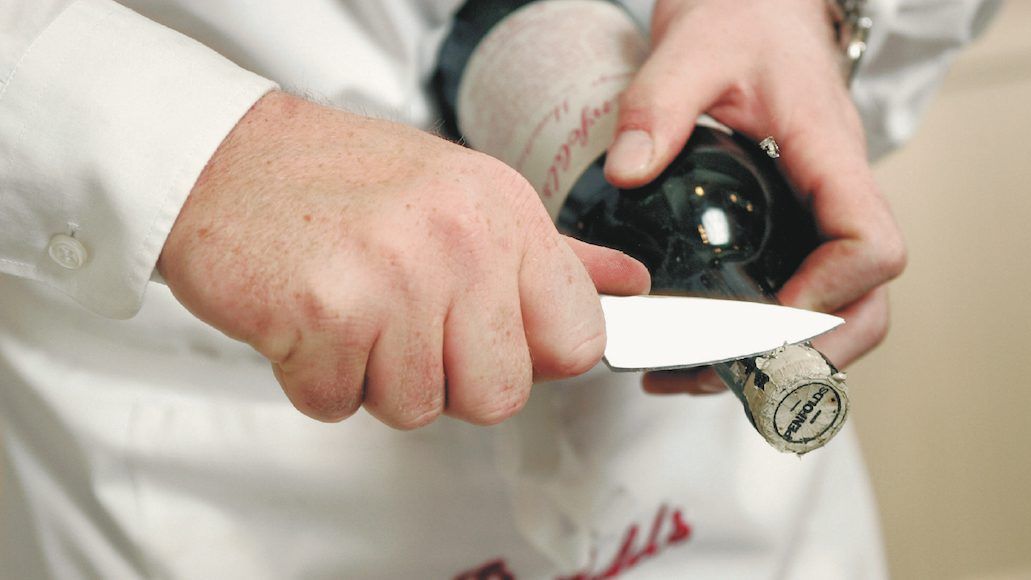

Exclusive Interview: Peter Gago of Penfolds on maintaining fine wines
We spoke to Peter Gago, head winemaker at Penfolds about cellaring fine wines, some common misconceptions and the rewards of patience.
Words: Anna Spooner
For 25 years Penfolds has led the way in fine wine after-care. Peter Gago, head winemaker, talks us through cellaring fine wines, some common misconceptions and the rewards of patience.
Peter Gago is known for his charisma and modesty and his wines are famed for their equal charisma but no one could argue they are modest. Their fan-base stretches all around the world and to keep their collectors happy (and educated!) they introduced a project 25 years ago called the ‘Recorking Clinic’ which has grown into a global undertaking.
He likens the clinics to the after service of buying a Rolls Royce, ‘if you spend hundreds of thousands of pounds on a car, it’s not being over expectational to think that they might come and help you out if your car stops. What we do twenty, thirty, forty, fifty years later is, in effect, the same thing. We’ll travel basically anywhere in the world and we’ll ‘repair’ that leaking bottle or that cork that didn’t go the distance.’
The clinics are designed to certify a range of bottles that are hidden away in all corners of the world. Guests are invited to come for a free appointment where Penfolds top winemakers will open each bottle, test it, re-cork it and top it up. Christie’s are also on hand to provide investment advice for mint condition bottles. But Gago is keen to point out that they don’t just re-cork and fully certify everything – ‘it has to be as that bottle should be for that given vintage – otherwise we’re just putting bad wines back into the system.’ And although he admits that there can be tears if a bottle doesn’t get its certification, it can also be a blessing. If a bottle gets what he refers to as a ‘white dot’, then it might not be able to be resold but instead they encourage you ‘drink the wine at the weekend or at Christmas or you’ve got another year – effectively we’ve given them permission to drink their bottle.’
Of course, many people hope that there bottle is in mint condition, and on that subject Gago had plenty of advice. ‘I think there are a few fallacies, one of which is that red wines get better with time – well, some reds do, some wines don’t get much better with time.’
So called ‘drinking windows’ are a huge area that Penfolds try to educate their collectors on. He explains ‘we provide a book, the form guide to all things Penfolds – it’s called ‘The Rewards of Patience’. You can look at any vintage of any wine, we update this book every four to five years and we’re up to edition seven at the moment.’ But what he clarifies is that if a wine says it should be drunk up until 2025 that ‘such things aren’t absolute… And we go through a lot of that, and I might say “look this drinking window does say now to 2025 but that’s for a wine out of our museum in perfect condition and this wine that we’ve just tasted and assessed, I would back up on that by five or six years.” This whole analysis, discussion on what’s in the glass and what’s just been assessed’.
But, of course, it’s important to know how to cellar these wines to try and keep that drinking window as accurate as possible and Peter confessed that ‘so many people just keep the bottle under the bed, or under the house and they little realise that it’s the fluctuation (in temperature) as much as the actual temperature that creates damage with cork – if you’ve got a fixed volume in a bottle, oscillate temperature therefore you oscillate the pressure in the bottle on the cork and ultimate bottles quite often leak. People tend to blame everything on the cork rather than the storage. So many great wines have been destroyed and/or lessened in quality because of bad storage.’
The clinics have seen their fair share of ‘repeat offenders’ and also some really sad instances where bottles that could have been wonderful have been ruined due to bad cellaring. He exclaims, ‘Especially the rarities! There might only have been a barrel or two ever made! If you come in with a 51 Grange it’s $50,000 (USD) in the auction market, and you have two or three bottles (that’s happened before) and you’ve literally got a car standing in front of you one minute and nothing the next if it’s not certified. That sort of thing hurts us as much as it hurts the owners.’
But the clinics aren’t only designed for the big-hitting bottles; in fact, Peter claims that of course ‘you get your multimillionaire and billionaire types’ but you also get everyone from ‘traders through to just lovely innocent mums and dads who often bring in their children or grandparents bringing grandchildren to look at heirlooms.’ And it’s this background behind the bottle that really makes it so interesting for the team – everyone is delighted to share their story, where they bought it, how much for and what they want to do with each bottle. It’s not a ‘mechanical thing’
Peter confesses that rather than slowing down over 25 years of service it’s the opposite – ‘What we’re having trouble with is keeping up! We’ve done the Zurichs, the Munichs, the Singapores, right across New Zealand right across the Americas. And no matter where we go, people want us to come back. I think it’s got quite a lifetime ahead, because in the world of fine wine cork is still so prevalent, you know screw caps are around and they tend to be for the more commercial styles and/or wines that people are buying for the short to medium term drinking. But I think for fine wine, put it away in the cellar, think about it later – those sorts of wine pretty much have cork in them and will continue to do so.’
And the million dollar question on every gentleman’s lips for the esteemed wine maker is, naturally, which wines should we be buying now that will go the distance. And, whilst an obvious choice would be their Grange wines – considered around the world to be their creme de la creme, (and in particular their Bin 389 which has seen 56 uninterrupted vintages) he also confessed to a dark horse in their portfolio. ‘I do think the sleeper wines in our portfolio, wine people don’t much talk about, but it will age as well as a good vintage of Grange of the same year.’ He even admitted that ‘we have people bring in wines from the 50s or 60s and they drink beautifully.’
So for those just getting in to the Penfolds portfolio, Peter recommends the 1994 and 1999 Grange in particular, should you be able to get your hands on any!
But for anyone lucky enough to already have a Penfolds wine to test, the Penfolds Re-Corking Clinic comes to Haberdashers Hall, London on 30th September 2016 and you can register for a free appointment here.


